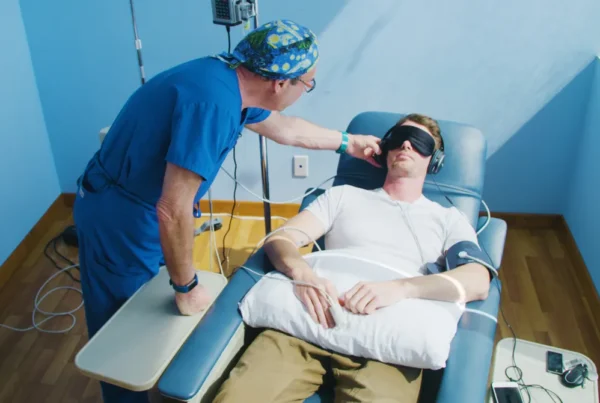Ketamine treatment is often called “the new frontier” in the field of mental health. Its use has skyrocketed in the last decade because of its promising effects in treating depression, anxiety, PTSD, and other psychological conditions. Although ketamine was initially used as an anesthetic for medical procedures, researchers have discovered that it can achieve immediate, long-lasting antidepressant effects at a sub-anesthetic dose. If you are considering an at-home ketamine treatment session, read on to learn what to expect.
 Before the Treatment Session
Before the Treatment Session
First, you must check if you are eligible for ketamine treatment. You must be diagnosed with a mental health condition like depression, anxiety, or PTSD. After you receive the green light from your provider, you will need to prepare a safe, comfortable space for the treatment. You may also be instructed to fast before the treatment, which can help enhance the psychedelic experience. Having a responsible friend or family member with you is essential, especially if you have never tried ketamine before. They can help you follow instructions and prevent any potential accidents.
 During the Treatment Session
During the Treatment Session
Your home ketamine treatment session typically lasts around 2-3 hours. The Ketamine will be administered sublingually (under the tongue). You will be asked to lie down or sit comfortably during the session. You should use headphones and eye shades to enhance the sensory experience. Ketamine is known to cause a dissociative state, meaning you may feel disconnected from your body and surroundings. You may also experience changes in your perception of time, space, and colors.
After the Treatment Session
Ketamine’s effects usually last several hours, and you may feel groggy, dizzy, or unable to drive after the session. Some people may experience mild side effects, such as nausea, headache, or increased heart rate. These should dissipate within a few hours. You should avoid alcohol or drugs affecting your brain chemistry for at least 24 hours before and after the treatment session. It is also recommended to have a quiet, restful day after the session to allow full integration of the psychedelic experience.
 The Benefits of Ketamine Treatment
The Benefits of Ketamine Treatment
Ketamine is not a cure for mental illness, but it has shown promising results in managing symptoms and providing relief for people who have not benefited from conventional treatments. Studies have found that ketamine treatment can lift depression and suicidal thoughts within hours or days, compared to weeks or months for traditional antidepressants. It can also improve anxiety, PTSD, obsessive-compulsive disorder, bipolar disorder, and chronic pain. Ketamine’s psychedelic effects can also lead to profound insights and emotional breakthroughs, making it a valuable tool for psychotherapy.
Ketamine treatment can be a transformative journey to the psychedelic realm, but it is not without risks and side effects. It is essential to approach it with caution and under the guidance of a licensed professional. At-home ketamine treatment can provide privacy, comfort, and convenience but requires adequate preparation, supervision, and follow-up. If you are considering ketamine treatment, research, ask questions, and seek support from trusted sources. With the right mindset and resources, ketamine treatment can open up new possibilities for healing and growth.



